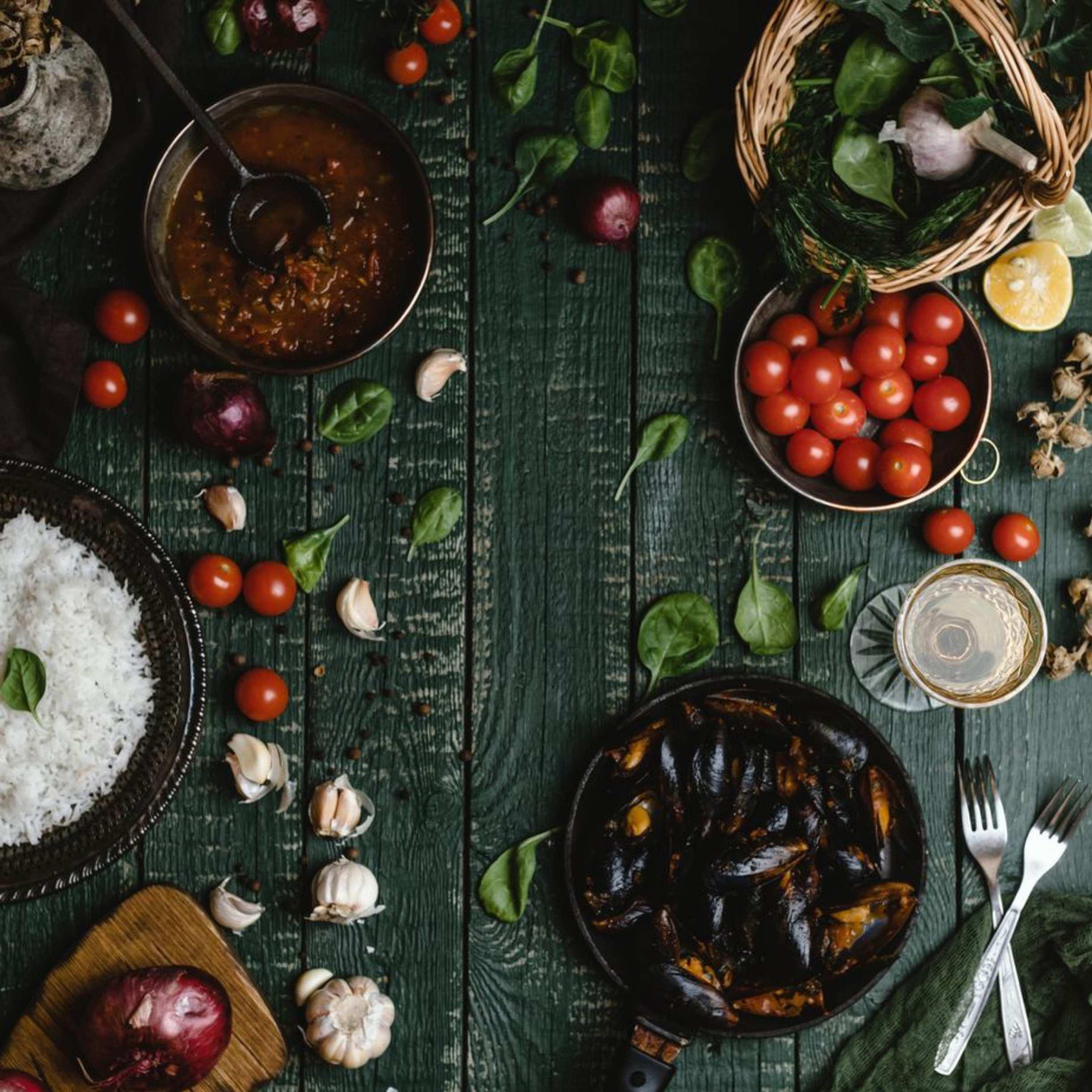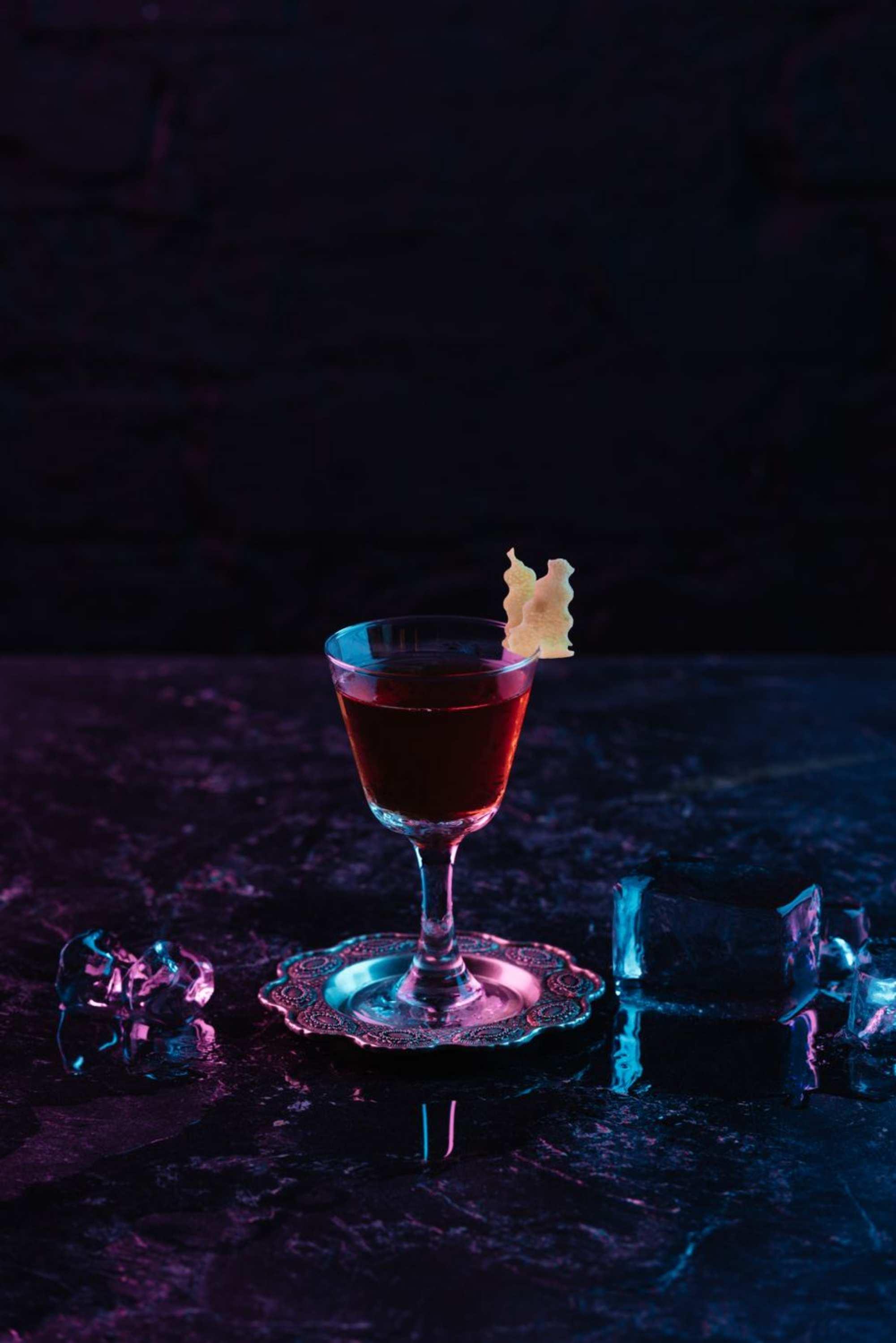
21 minute read
Top 10 Traditional
When in Spain, take a car, bus, or train; buckle up and start heading North to the Basque Country or País Vasco. Once you enter Navarra, you will know that you are far away from the place you thought Spain was. You leave behind the hot, warm weather, tapas, sangría and flamenco and enter the cold, rainy weather of pintxos, sidras and white houses that the Basque Country is.
One of the most beautiful thing Spain has to offer is its diversity. Every region or Autonomous Community or Comunidad Autónoma is not only different in its unique landscapes but also in the language, culture, people but mostly, THE FOOD. Each region in Spain is home for a variety of special, traditional dishes.
Advertisement
Basque Country and Gastronomy
The Basques are very proud of their culture, language (Euskara) and people, but mostly, of their gastronomy. Basques take their food seriously, they love taking time on gathering good organic products and cooking it to its perfection.
Let put it this way, if you want to eat some Paella and drink some Sangría, the Basque Country is not your place to go. Certainly, these are some of Spains special dishes but their home is all the way in Valencia.
Here are some Basque traditional dishes that you should try when travelling to the north of Spain.
BAKALAO PIL PIL
Bakalao or Cod is the king of Basque gastronomy. It is said that many years ago, the Basques learned the technique of salting and drying fish from the Vikings. Ever since, it has been a technique highly implemented in Basque cuisine.
Basques love their cod, salted or fresh. If you ever travel to the north of Spain you will see that every restaurant or bar will have a at least two dishes with cod.
There are various Basque national dishes that include Cod, Bakalao Pil Pil being one of them. For this recipe the Cod is slow cooked in oil (confitar), it is not fried but slowly and in low heat cooked in the grease. The fish looses its natural gelatine into the oil, which is then mixed and whisked together until it is dense and forms a mayo looking sauce.

BAKALAO VIZKAINA
This famous recipe has its home in Vizcaya, also home to the city of Bilbao. This recipe could also be elaborated with fresh or salted cod. Being salted cod usually the most used in this area of Spain. The cod is served with a tomato and choricero pepper sauce.
Choricero pepper is a variety of red pepper that is air dried for conservation. It is usually hydrated with warm water before cooking, where only the meaty pulp is used.
MARMITAKO
If we keep putting fishes in a cast system, Bonito will be the knight in a shining armour. Bonito is basically the cousin of Tuna fish. Quite similar in the outside but definitely different in meat colour (Bonito is more pink while Tuna is usually bright read), texture and flavour. This dish popular amongst fishermen, is a fish stew, usually using Bonito or Tuna, vegetables, potatoes and tomato sauce. It originated on the Bonito fishing boats and it used to be the dish of substance for fishermen. Today, is a well known, flavourful and aromatic fish stew made all over the Basque Country.
BAKALAO PIL PIL

Merluza a la Vasca Source: Desirée Piña
MERLUZA A LA VASCA O EN SALSA VERDE
If Cod is the king of Basque gastronomy, hake or merluza is its queen. Hake is, next to cod and bonito, one of the fishes most consumed in Spain. You can find this fish cooked in various different forms all throughout the peninsula. Merluza en salsa verde (hake on green sauce) is a typical hake dish to eat in the Basque Country.
This dish is simple yet delicious and full of flavour. With some fish stock, white wine, flower, garlic and parsley you got yourself a salsa verde. Add some green peas and clams to take it to the next level.
TXIPIRONES EN SU TINTA
Txipirón, in the Basque Country, is a smaller and much younger squid. It is very typical to cook it in various different ways, deep fried, grilled, stuffed and even on a stew.
Squid cooked on their own ink may sound a bit weird and look a little bit too black to be appealing, but the taste of fresh squid slowly cooked on a stew made out if its own ink and delicious vegetables is just delight-full. Definitively one you do not want to miss!

Carrilleras al vino tinto, Restaurante Kukuarri, San Sebastián. Source: Desirée Piña
CARRILLERAS AL VINO TINTO
For all those meat eaters out there, this one is the catch for you. Carrilleras or veal cheeks (can also be pork cheeks) are slowly cooked on a red wine and meat stock until it becomes so tender that it melts in your mouth. This is definitely not the most traditional dish but for sure one of the most loved ones by the foodies out there and one that has become popular in the last few years.
ALUBIAS DE TOLOSA
Legumes are a very important food and source of nutrients in Spanish cuisine. All throughout Spain you will find different types of dishes, usually soups or stews, made with legumes. There are dishes made with all different kinds of beans, lentils, garbanzo etc...
Alubias de Tolosa is the most typical legume or bean dish found in the Basque Country. What makes this dish special is the type of been D.O. de Tolosa, which are only grown in this area of the country. The dish is a creamy, flavourful bean soup that it could be eaten on its own for a vegetarian version or it can be accompanied by some meat called sacramentos: usually pork, morcilla (blood sausage) , costilla (ribs), chorizo, rabo de toro (oxtail).
PORRUSALDA
Simple, delicious and perfect for a cold rainy day. For all those vegetarians out there this is a perfect dish for you. This leek – potato soup is nothing far from bland or boring.
TXAKOLÍ
If you have been to Spain or even read a little bit about it you would know that Spaniards love their wine. Txakolí is a type of fizzy white wine elaborated in the Basque Country.
PORRUSALDA


Txakolí is a dry, slightly sparkling white wine. Usually created in coastal towns, with the salty ocean breeze dancing with the crops, making the wine high in acidity. Its natural semi fizzy texture makes this drink a Basque favourite to enjoy with a nice meal.
PANTXINETA
We could not finish this article without a dessert. Pantxineta is a typical dessert of the Basque Country. It is a sandwich like cake made out of puff pastry stuffed with pastry cream and almonds.

For all my food lovers out there, something to add on your bucket list is escargot. When I first tried it, my mouth watered with happiness. The flavors were like no others and the texture was out of this world. Though, you will have to watch how it is prepared and served at the restaurant you are in. I had the pleasure of trying this dish outside of the United States.
I’m from a small town in New Hampshire that isn’t known for escargot. This dish is known to be consumed by many people throughout France, Germany, Great Britain, Italy, Portugal, and more. I had this fantastic dish while visiting Aruba. It has a mixture of cultures and diverse food to match. You may only think of dazzling beaches when Aruba comes to mind but this beautiful island has much more to offer. This island provides tasty rum, incredible art, and a lively place to socialize and party. On top of all of that, it has incredible food that is a must try, one being some amazing escargot dishes that you won’t find in the States.
What is Escargot?
Escargot is a snail that has been cooked and prepared to eat. Usually giant snails are used to make this dish. Some chefs cook them and then keep the shells while others veto the shells altogether and mix the escargot with something else like mushrooms. If you get the chance, you must try them both ways. It is one of the best appetizers you can enjoy while on any trip.

How does Escargot taste?
I was lucky enough to dine at Quinta Del Carmen, a four-star restaurant. It was casual and comfortable with candlelit tables. The perfect setting to try my first plate of escargot. It was served in a round bowl, with no shells and the most delicious scent I have ever smelled.
The escargot was served with a garlic butter sauce and mushrooms all mixed in together. The texture was interesting because it was smooth like the mushrooms mixed in but slightly gooey. While I was eating the plate, I couldn’t quite tell the difference between the mushrooms and the escargot. The only thing that I knew was that it melted in my mouth and was one of the best dishes I had ever had.
How is escargot cooked and prepared?
Fun fact about escargot shells, they can actually be cleaned and reused like little dishes. Usually, chefs will buy the meat or snail and reuse the same shells from others. Before that, they cook the snails in the oven. The shells are covered in a delicate butter lemon sauce. It can be baked and then served with a nice slice of bread to enjoy.
Where to Find the Best Escargot in Aruba?
Quinta Del Carmen– Now I may be biased because this is one of the first places I tried escargot without knowing it was even a snail. It was put together delectably with buttered mushrooms and lemon served along with crunchy toasted bread.
Water’s Edge Restaurant and Bar– One of the best places to grab a quick bite to eat and, of course, a fantastic drink. They serve escargot with lemon butter sauce topped with garlic bread crumbs.
Papillion Restaurant– This restaurant provides a romantic vibe for a couple on vacation. Best of all, it is one of the best places to get escargot. It is served with a garlic cream sauce, onions, and a lot of herbs with toasted breadsticks to enjoy.
Though many of my American friends find this to be a weird or gross dish, it is a delicacy that you should try once in your life. They have the texture of oysters or other shelled creatures, but if appropriately served, you won’t know it is a snail. It will melt in your mouth and taste like one of the best things you have ever eaten.
THE SERVICE

Around eight years ago, I first started my job as a food critic at MetNights Magazine. It was unlike anything else I’ve ever experienced, and honestly, it taught me more about food, nightlife, and business than I ever thought possible. It’s one of the most striking jobs I’ve ever had, not just because of the knowledge, but because of the opinions people want from you.

I quickly learned, for example, that people really do want to know what professionals notice when we hit a venue. I can’t name how many times I’ve been asked for an opinion on a favorite restaurant or the “inside scoop” on a diner that’s generating buzz.
So, I decided it’s time to come clean about what really matters to me as a critic when I go out to eat. Here’s how to see things through this food worker’s eyes, and why it all matters. In this chapter of this multi-article arc, I’m going to explain what ticks off restaurant critics the most.
ACCEPTANCE
Believe it or not, there are very few things restaurant critics notice more than the way venue staff members treat their clientele. Nothing is quite as aggravating or infuriating as seeing a fancy restaurant that makes a point of turning away clients just because “they don’t look like they belong there.”
I honestly believe that the best restaurants are the ones that welcome you with open arms, regardless of who you are. Giving great service means you never should feel like you’re being talked down to by the waitstaff, or being excluded based on your appearance.
On one occasion, I went to a Jersey Shore venue that refused to seat me after they realized my non-white work partner wasn’t looking for a job there. The waiter didn’t realize that the restaurant’s PR firm hired me to dispel rumors of racism.

By the time we left, we had three frantic


phone calls begging me for a do-over, as well as a text message claiming I “forgot my bottle of Remy” at the bar. I ended up blocking the number and trashing the review.
KNOWLEDGE
Regular restaurant-goers don’t really ask waiters about their suggestions or knowledge of the food, and if you ask me, that’s criminal. Waitstaff knowledge about the food, cooking process, and culture is the hallmark of a great restaurant. It shows passion. It can also guide you to a better meal.
If you want to rate a restaurant like a hired critic, quiz the waiters on what pairings would go well with dishes, ask them where food was sourced from, or ask them which dish is their favorite. If they can’t come up with an answer, chances are that the restaurant can’t retain good staff on hand.
THE KITCHEN
Fun fact here—restaurant critics will often tour the kitchen to get a better feeling of what’s going on. It’s a lot like Kitchen Nightmares, really. As someone who’s done a tour of multiple kitchens, I can tell you that the kitchen’s cleanliness often makes or breaks my interest in a venue.
You might not be able to tour a kitchen all the time, but it’s still something that’s worth writing about. In this arc, I’m telling everyone about the do’s and don’t of kitchen life. Here’s my criticapproved list of what to watch out for when you’re in (or near) a kitchen...
CLEANLINESS
II once “accidentally” dropped in a kitchen of a venue I was rating, and immediately left after seeing a kitchen covered in stains. I had every right to, too. Kitchens that aren’t clean come with


a litany of problems associated with them.
A clean kitchen is a kitchen that keeps people from getting sick. It’s also a sign that you won’t end up with flavors that don’t mesh well messing with your food, or worse, find wildlife in your dinner. If it doesn’t look clean, it’s not clean. If it doesn’t smell clean, it’s also not clean. Don’t mess with unclean restaurants, please!
FOOD PRACTICES
Would you ever want to pay to eat a meal that’s been sitting out on a counter for half an hour? I’m willing to guess you wouldn’t. Yet, a lot of restaurants do this on a regular basis. Many restaurants also store vegetables with meats, mix cutting boards, and use microwaves to reheat foods.
This. Is. Not. Okay. At best, you’re paying $10 or more for a microwave meal. At worst, you are putting your health at risk. Cooking food safely and serving it immediately is crucial to a restaurant’s value. If it’s not cooked properly, it’s not something you should ever eat.
TEMPERATURE


Here’s a good way to determine whether the kitchen’s doing its job properly: check out the temperature of the food that you’re being served. Hot meals should be hot, cold meals should be cold, and sushi should be room temperature.
Unevenly heated food is a telltale sign of microwaving, which is never acceptable. If you’re unsure of ingredient freshness, check out the mozzarella. Mozzarella should be room temperature, not chilled. Chilled mozzarella is a sign of improper food storage that can detract from flavors you want to taste.
TEAMWORK
Kitchens, by nature, are very chaotic. There’s a lot of food being prepped, a lot of people running around, and things that need to be done. That’s why it’s so important (and impressive) to see a kitchen that runs like a well-oiled machine.
Kitchens that don’t have effective teams are kitchens that make disastrous food. I’ve personally witnessed screaming matches behind the scenes, as well as literal food fights. Needless to say, I was rightfully leery of actually eating anything on the menu.
MY BOTTOM LINE
The kitchen is the most important room in any restaurant. If things aren’t working out well there, you should never eat at that venue. If you want to play it safe, stick to venues that have a visible window into the kitchen. You can’t hide anything from clients if they can watch you!
THE FOOD
At the heart of every restaurant is their food. Bad food means you’re dealing with a pretty terrible or even dangerous establishment. As a food critic, it’s my job to keep people from eating at venues that don’t have their best interest in mind.
You might be curious about what foodies like myself notice when they are out and about. Here’s a quick list of some of the things I look for when I’m reviewing a restaurant.
FRESHNESS

KWithout fresh food, a restaurant has nothing. Bad food can and has killed people before. So, I always start with examining the food for signs of less-than-fresh dishes. Some signs are easy to

Fishy smells at seafood or sushi restaurants, for example, are a dead giveaway that the food they’re making isn’t fresh. Wilted lettuce, squishy fruit, stale bread, and food that just doesn’t taste right are dead giveaways.

Some signs of bad food aren’t that blatant. I take notice of special menus that have certain meats or vegetables as main themes. This is a sign that restaurants are making an effort to get rid of stock before it expires!
INGREDIENTS AND SOURCING
I’ll admit it, I’m a huge fan of seeing menus that involve exotic ingredients and foods that have their sourcer plainly written for all to see. Why? Because it a sign that the restaurant is dedicated to getting good ingredients, and shows a desire to push the envelope when it comes to menu creation.
That being said, I do try to avoid “trendy” ingredients like truffle or sriracha. These are often used as a marketing technique to grab the attention of others, rather than actually deliver flavor. 62 I fooddrinkmagazine.com
TASTE
What’s a good meal that doesn’t taste great? Nothing, that’s what. At the end of the day, if the food doesn’t taste good, it’s not a good restaurant. No amount of fresh ingredients or cool ideas can make up for food that tastes foul or feels strange in your mouth. It’s really just that simple.
PRESENTATION

Prior to being a food critic, I worked at an online restaurant that shipped foods across the country. To give people an idea of what they’d get, they’d take pictures. One of the photos that was put up looked like cat vomit. The food itself tasted great, but no one wanted to order it due to its appearance.

MENU DECISIONS
What I’m saying is that presentation matters. It matters a lot, actually. If the food looks like it was slopped on a plate without a second thought, I won’t be a happy foodie—nor would food bloggers who wanted to add a new shot on their ‘gram.
The menu of a venue also can serve as a warning to others. A good rule of thumb among critics is that no menu should be over three pages long. This indicates that the kitchen hasn’t mastered any dishes, or has too many ingredients to actually keep things fresh.
Similarly, a menu that relies on cheese and butter tends to be a warning to me. Fats taste great, but they are often used as a way to avoid skill or cheapen the ingredients that are being served to you. As a result, it’s best to avoid places that regularly push large amounts of grease.
Specializing in a certain type of food tends to be a good sign of a great restaurant. It means that the kitchen knows what the
MY BOTTOM LINE
TA restaurant critic’s main interest is the food, and they know what to look for when they’re eating out. Freshness, flavor, and presentation are the most important parts of a dining experience, and if you don’t have that, you have nothing at all.
THE DRINKS

The bar area is the lifeblood of many restaurants, and rightfully so. It’s one of the most profitable parts of the restaurant industry and can make or break your experience there. Bars also act as a good gauge of the restaurant’s care of clients.
Part of being a food critic is knowing what to watch out for when you hit the bar. Did you ever wonder what makes the difference between a good and great bar, or what makes a restaurant a total no-go? In this arc, I’ll reveal what a restaurant’s bar says about them.
THE BAR MENU
A bar’s menu can speak volumes about the restaurant you’re at. Drinks set the tone for the night, and to a point, reflect the bar’s unique brand. That’s why I’m leery of bars that only serve beer, wine, classic drinks, and shots on tap. It’s a sign that they lack effort, and that they don’t want to stand out in a crowd.

A green light from me is seeing a bar menu that includes unique cocktails involving rare ingredients. Its proof that the restaurant is willing to go the extra mile to set themselves apart, and that they have a certain level of dedication to their craft.
CLEANLINESS
For the life of me, I can’t name how many bars I’ve visited that had water stains (or other stains) on their glasses. This is not acceptable. If a bar can’t even get their glasses clean, how can you trust that the rest of the venue is clean?
This is one of the reasons I order beer at every venue I’m critiquing. Beer, when poured through a clean tap, will have suds that cling to the glass. No suds, or low suds, means that you are likely drinking booze from a tap that hasn’t been cleaned in ages.
SKILL
Mixing a good drink is a skill that comes with time, and a good restaurant critic knows this. Most critics I’ve met have a go-to drink they order as a way to ensure the restaurant hires good staff. That being said, a highly unusual cocktail that has a great presentation can be proof enough of a bartender’s level of skill.
My personal go-to is a classic Manhattan. If it goes down smooth, has a minimal burn, and tastes refreshing, the bartender knows what he’s doing. If I’m not feeling a Manhattan, I’ll order a house drink to see what they can do.

PAIRINGS
Part of understanding the art of drink is knowing which drinks match well with food. I generally ask about wine pairings with my meal to see how well people understand wines. If a bartender or waiter just shrugs their shoulders or offers a random red or white wine without talking about flavor, chances are they really don’t know (or care to know) about pairings.
BAD DRINK PRACTICES
When I’m working, I make a point to watch the bar like a hawk. Bad bars and restaurants often use sketchy tactics to make their ends meet. Things like using cheap liquors instead of top shelf are a bad sign, as is the practice of mixing old bottles of wine with new ones as a way to save money.
Some of these practices, including wine mixing (or “marrying drinks”) are actually illegal. So, if you see this happen, it’s probably a sign you should bail from the restaurant.
MY BOTTOM LINE
The way a restaurant treats its bar will tell you volumes about how good (and safe) their food will be. Should you notice a lack of effort at the bar, it’s often best to just skip the food altogether.
Bailey Woodean







